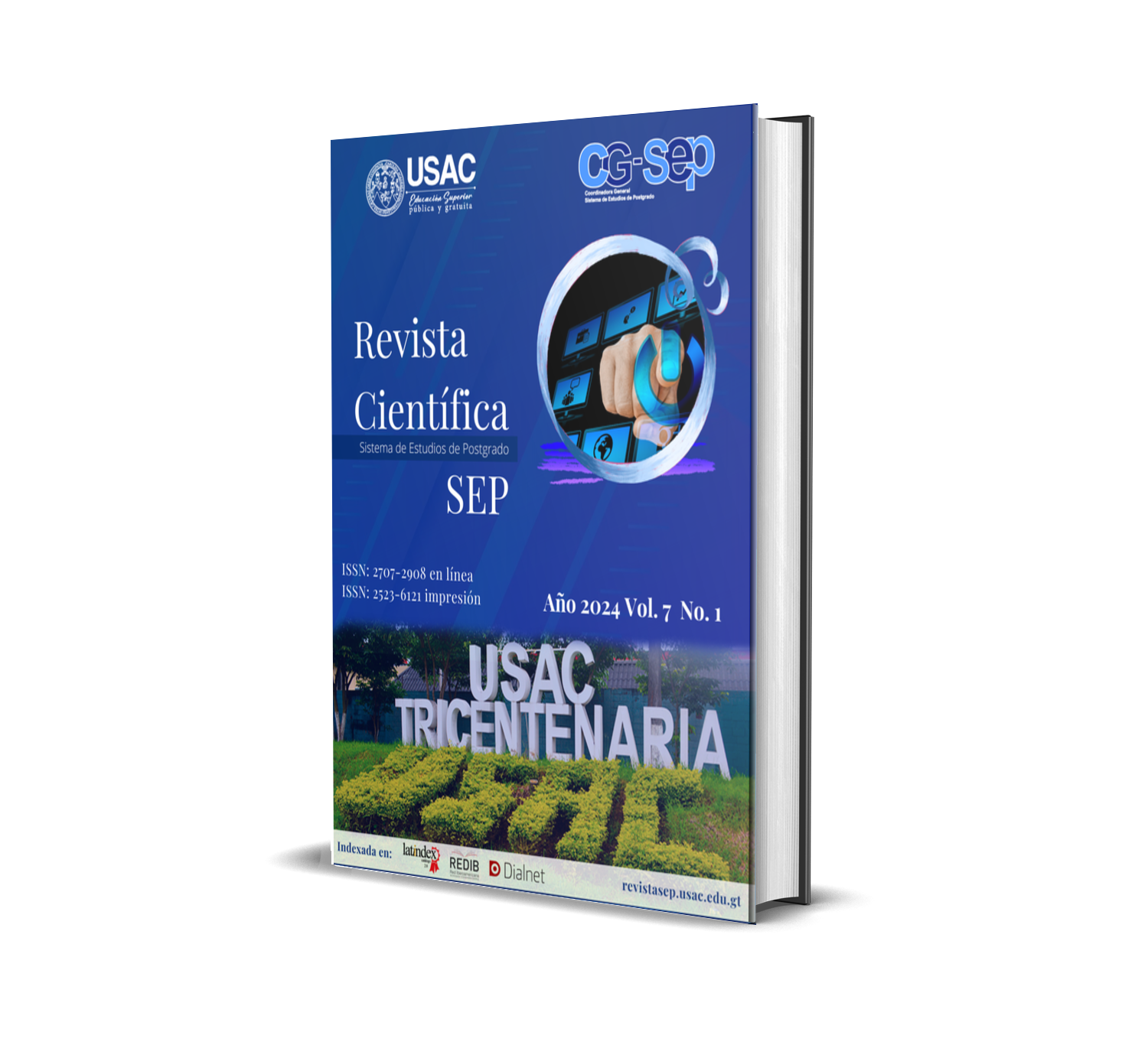Software architecture of a current research information system (CRIS) for the Universidad de San Carlos de Guatemala.
DOI:
https://doi.org/10.36958/sep.v7i1.210Keywords:
CRIS, CERIF, Science, Technology, Information SystemsAbstract
OBJECTIVE: generate a software architecture that supports the needs of an information system managing current research (CRIS) at the University of San Carlos of Guatemala (USAC). METHOD: requirements were gathered through meetings with key stakeholders in science at USAC, aiming to understand their needs and compare them with the software features of different CRIS open-source solutions. Following this, with clear requirements and met characteristics, the architecture of information systems serving as primary data sources for CRIS was built. RESULTS: the main outcome was the architectural design of all information systems forming part of a CRIS for USAC, fulfilling the university’s needs for managing research. CONCLUSION: the initial step towards adopting and implementing a CRIS system is researching the institution’s needs, then comparing them with CRIS solutions to design an architecture. It’s also crucial to note that not all architectural designs are suitable for every institution; each should have a unique information system design.
Downloads
References
Asserson, A., Jeffery, K. G., & Lopatenko, A. (2002). CERIF: past, present and future: an overview. http://hdl.handle.net/11366/131
Azeroual, O. (2019). Text and data quality mining in CRIS. Information, 10(12), 374. https://doi.org/10.3390/info10120374 DOI: https://doi.org/10.3390/info10120374
Dvořák, J., Chudlarský, T., & Špaček, J. (2019). Practical CRIS interoperability. Procedia computer science, 146, 256-264. https://doi.org/10.1016/j.procs.2019.01.077 DOI: https://doi.org/10.1016/j.procs.2019.01.077
Illig, S., & Eiermann, A. M. (2017). Running DSpace: DSpace-CRIS with Docker.
Lyrasis. (2023). Introduction to DSpace-CRIS. DSpace-CRIS Wiki.
https://wiki.lyrasis.org/display/DSPACECRIS/Introduction
Vaci, N., Liu, Q., Kormilitzin, A., De Crescenzo, F., Kurtulmus, A., Harvey, J., ... & Nevado-Holgado, A. (2020). Natural language processing for structuring clinical text data on depression using UK-CRIS. BMJ Ment Health, 23(1), 21-26. http://dx.doi.org/10.1136/ebmental-2019-300134 DOI: https://doi.org/10.1136/ebmental-2019-300134
Vázquez, R. (2022). Development and characterisation of CRIS systems in Latin America: Preliminary results of diagnostic survey. Procedia Computer Science, 211, 267-276. https://doi.org/10.1016/j.procs.2022.10.201 DOI: https://doi.org/10.1016/j.procs.2022.10.201
Published
How to Cite
License
Copyright (c) 2024 Kevin Adiel Lajpop Ajpacajá , Ana Elizabeth Ixcolin Ramirez, Rony Ormandy Ortíz Alvarez

This work is licensed under a Creative Commons Attribution 4.0 International License.
The authors who publish in this journal accept the following conditions:
- The authors retain the copyright and assign to the journal the right of the first publication, with the work registered with the Creative Commons 4.0 attribution license, which allows third parties to use what is published as long as they mention the authorship of the work already the first publication in this magazine.
- Authors may make other independent and additional contractual agreements for the non-exclusive distribution of the version of the article published in this journal (eg, include it in an institutional repository or publish it in a book) provided that they clearly indicate that the work it was first published in this magazine.
- Authors are allowed and encouraged to share their work online (for example: in institutional repositories or personal web pages) before and during the manuscript submission process, as it can lead to productive exchanges, more and more quick citation of published work (see The Effect of Open Access).









